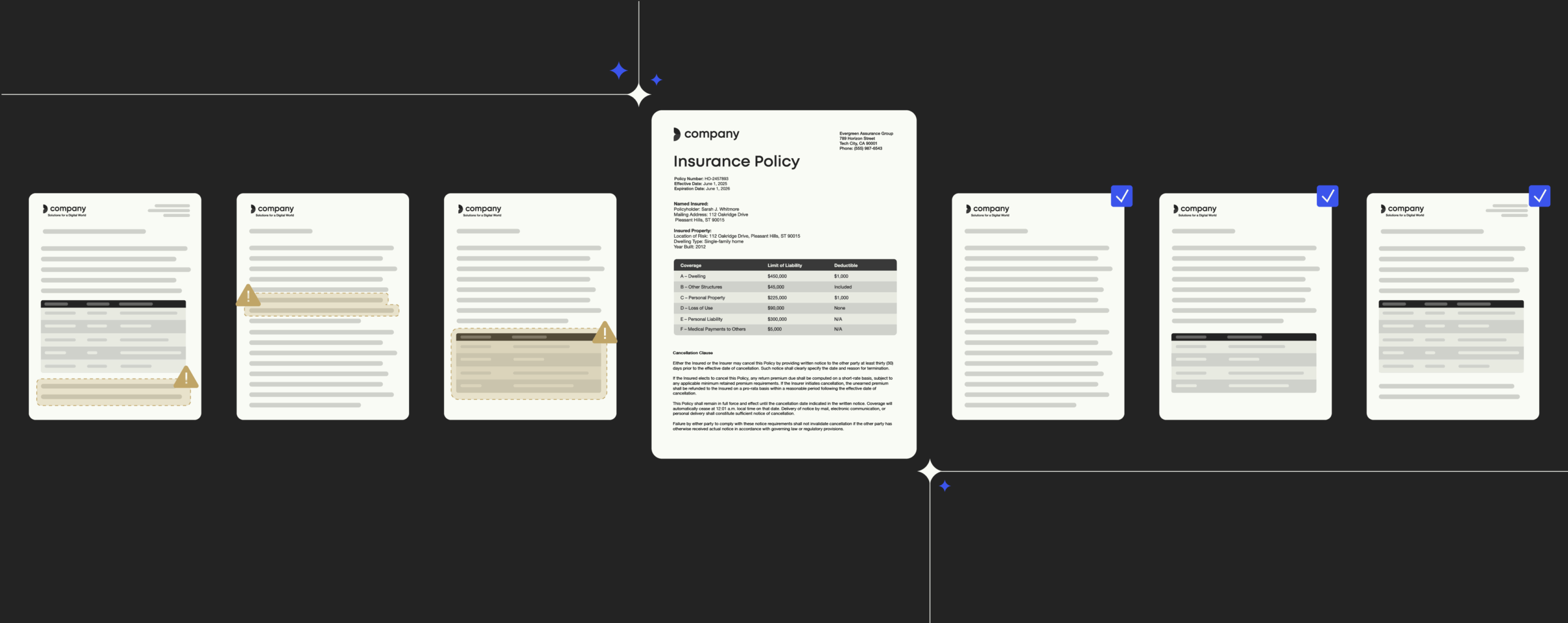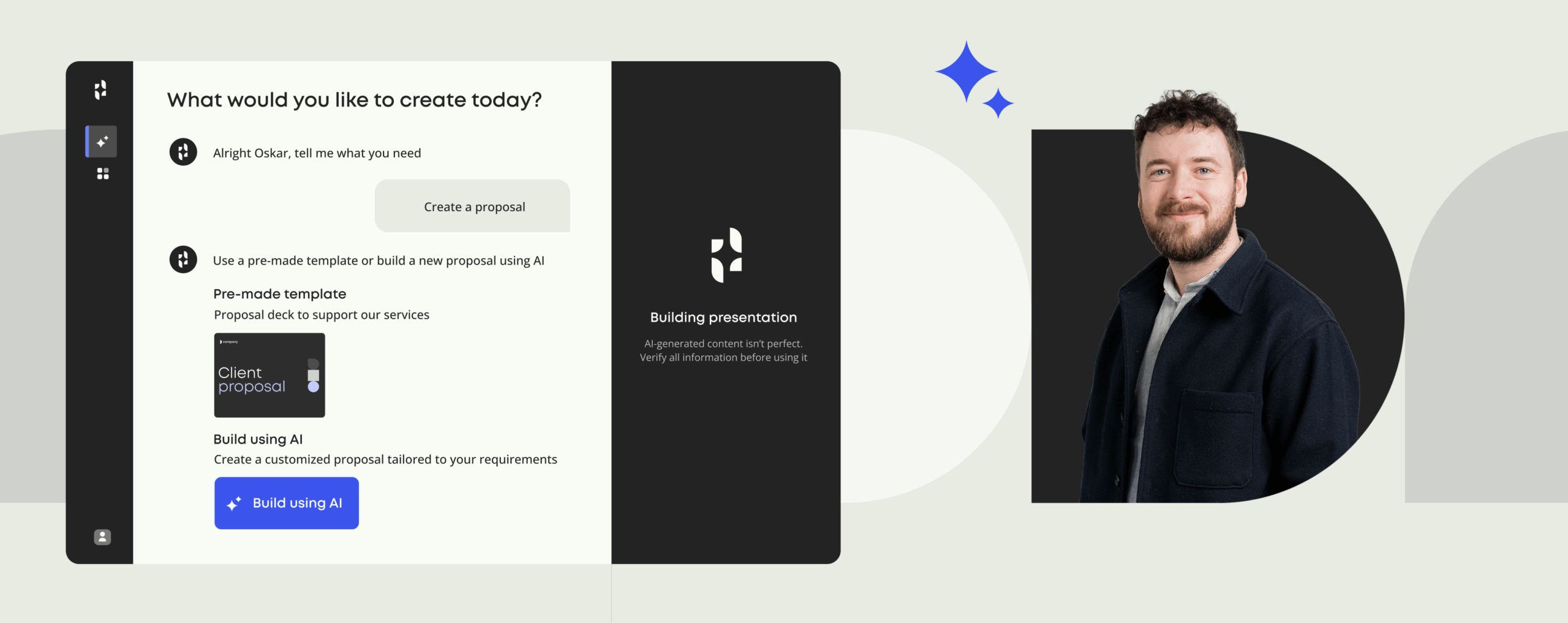Business enablement explained: Strategies, tools, and KPIs

Drive business growth by connecting your teams, workflows, and tech stack
We all want to work smarter, not harder.
But that doesn’t mean you should invest in every tool that promises to fix inefficiency. In fact, too many disconnected systems can reinforce the very problem they’re built to solve: creating fragmented workflows that drain productivity.
What your teams need are fewer tools that do more.
Business enablement is about creating connected, tech-powered workflows that give your teams the tools and resources they need to do their best work.
Keep reading to discover how to implement a business enablement strategy that delivers tangible ROI, starting with the most crucial task in your organization: document automation.
What is business enablement?
Business enablement explained
Business enablement is a strategy that gives employees access to the tools, resources, and processes they need to work more efficiently.
It focuses on building systems that eliminate repetitive tasks, clear workflow bottlenecks, and enable every team to accomplish more.
At the core of any business enablement strategy is technology—selecting the right platforms to seamlessly connect everything and drive real, measurable results.
The outcome is lower costs, optimized resource use, and higher-quality work that ultimately fuels business growth.
Business enablement solutions are typically:
- Company-wide: They benefit the entire organization, not just one department.
- Intuitive: They’re easy to use and fit naturally into existing workflows, making them simple for employees to adopt.
- Integrated: They work well with other systems, helping your business get the most out of its tech stack.
Why business enablement matters
When teams are held back by inefficient processes, they spend more time on the wrong tasks and less time creating value. This means a business can’t make the most of its resources, and ultimately, earns less than it could.
In fact:
- McKinsey & Company found that over 50% of employees report being “relatively unproductive” at work.
- Gartner conducted a survey and found that 47% of digital workers struggle to find the information they need to do their jobs effectively, leading to wasted time and inefficiency.
Business enablement solves these problems by eliminating friction, simplifying workflows, and giving employees the tools they need to work efficiently. This leads to increased productivity, quicker results, and a stronger bottom line.
business enablement
6 benefits of business enablement
Implemented well, business enablement delivers tangible benefits across the organization:
- Improved efficiency
By aligning people, processes, and technology, business enablement removes friction and ensures everything runs smoothly, leading to faster workflows and fewer bottlenecks. - Scalability
Business enablement lays the foundation for growth, making it easier to scale operations and adapt to changing demands without disrupting your business. - Cost reduction
Streamlining processes and optimizing resources means less wasted time, fewer manual errors, and lower operational costs across the board. - Higher productivity
With the right tools in place, teams spend less time on repetitive tasks and more time on high-value work, leading to a measurable increase in output and performance. - Stronger compliance
Business enablement helps ensure that processes are standardized, making it easier to maintain compliance and avoid costly mistakes or regulatory issues. - Faster time to market
By removing silos and improving collaboration, business enablement allows teams to bring products or services to market faster, giving you a competitive edge.
Stay secure and compliant
Stay up to date on best practices for document security and compliance. Get clear advice and the latest news to protect your organization.
Business enablement in the AI era
As AI continues to redefine industries, business enablement ensures your strategic goals lead technology decisions—not the other way around.
By aligning AI with your business strategy, you protect your investments and ensure long-term value. Here’s how:
- Start with your needs: Define goals before selecting tools (e.g., faster workflows, better data insights, or more efficient communication).
- Build a scalable strategy: Invest in adaptable tools that grow with your business.
- Measure ROI: Track the impact of AI tools on productivity, costs, and quality.
Sales and marketing enablement
Business enablement may be a relatively new concept, but you’re likely already familiar with sales and marketing enablement:
- Sales enablement (first coined in 1999) focuses on providing sales teams with the tools, content, and training they need to close deals and drive revenue more effectively.
- Marketing enablement equips marketing teams with resources and tools to create consistent, on-brand campaigns that engage audiences and align with overall business objectives.
Business enablement takes these concepts and scales them across the entire organization. By integrating people, processes, and technology across all departments, business enablement creates a unified system that boosts performance, reduces risks, and fosters cross-team collaboration.
How to actually implement business enablement
Now that you know why business enablement matters, let’s look at how to implement it effectively. These actionable steps will help you create solutions that are designed to succeed and easy to measure.
1. Identify the challenges holding your organization back
Before you can make improvements, you need to understand the roadblocks slowing your team down. Here are some common challenges that business enablement can solve:
- Siloed systems: Disconnected tools and platforms cause data fragmentation, manual work, and delays.
- Compliance risks: Scattered content increases the chances of outdated, non-compliant documents slipping through the cracks.
- Inconsistent branding: Without centralized controls, your brand message can become diluted and inconsistent across departments.
2. Consider these four strategic approaches to business enablement
Once you’ve identified the pain points, here are four strategies to streamline processes, improve collaboration, and drive business growth.
Automate repetitive tasks
- Why it matters: Manual tasks are time-consuming and error-prone, slowing down your teams.
- How to do it: Identify repetitive workflows (like document creation and approval) and automate them to remove manual steps.
- The benefit: Automation reduces errors, speeds up processes, and allows your teams to focus on more valuable work.
Build smarter content systems
- Why it matters: Content overload can cause confusion and inefficiency. Teams need quick access to the right documents.
- How to do it: Implement a centralized content system that serves relevant content at the right time. Ensure templates and resources are always up-to-date and easy to find.
- The benefit: This increases productivity, reduces the time spent searching for information, and ensures accuracy and consistency across teams.
Align teams across the business
- Why it matters: When teams don’t share the same tools or processes, work becomes fragmented and inefficient.
- How to do it: Standardize processes, tools, and templates across departments to ensure everyone is on the same page.
- The benefit: Cross-functional alignment promotes better communication, faster decision-making, and improved collaboration, driving better outcomes.
Implement change management and effective onboarding
- Why it matters: New systems can fail if employees don’t understand how to use them effectively.
- How to do it: Develop a clear change management strategy. Offer training, provide ongoing support, and foster a culture of feedback and continuous learning.
- The benefit: Proper onboarding ensures high adoption rates, maximizing the value of your investment in new tools and systems.
3. Choose the right features for your organization
You need a platform that unifies your workflows, not just a collection of isolated tools. But what features make a platform effective and worth the investment?
Imagine a system where all your content, processes, and compliance checks live in one place;— always up to date and accessible in real time. That’s the core of a smart business enablement platform. To get there, focus on these essentials:
- Centralized access to critical content: Eliminate wasted time spent searching for documents by consolidating resources in one easily accessible platform.
- Brand and compliance guardrails: Ensure every document is on-brand and compliant with internal and legal guidelines. This prevents costly mistakes and legal issues.
- Automate manual processes: Automate repetitive tasks like document generation and approval workflows, reducing errors and boosting productivity across your organization.
4. KPIs to measure for success
To ensure your business enablement strategy is delivering, track these essential KPIs.
| Metric | Measure | Why it matters |
|---|---|---|
| Workflow efficiency | Time spent on tasks and how quickly teams complete deliverables | Helps pinpoint bottlenecks and optimize processes for smoother workflows |
| Employee productivity | Output per employee over time | Indicates if automating tasks is freeing up time for higher-value work |
| Adoption rate | Percentage of employees actively using new tools and systems | High adoption shows your team is fully embracing the changes |
| Cost savings | Reduction in operational costs due to automation | Proves that your business enablement strategy is improving cost-efficiency |
| Compliance adherence | Number of non-compliant documents or processes | Tracks if your enablement is reducing risks and keeping you aligned with legal standards |
| Time to market | Time taken to launch products or services | Shorter timeframes show your workflows are faster and more efficient |
Why document automation is the key to business enablement
To unlock the best ROI across your organization, start with the process that drives it all: document creation.
Documents are one of the biggest drains on time and productivity. In fact, a study by Glean found that employed Americans spend two hours a day searching for documents, information, or people to get their work done.
Automating document creation removes manual tasks, ensuring compliance, brand consistency, and accuracy.
Not only does this save time, but it also boosts revenue. Documents like proposals, pitch decks, and client reports are key to securing clients and protecting your brand.
How Templafy supports business enablement
What is Templafy?
Templafy is the AI-powered document automation platform for enterprises, that simplifies the entire document creation process.
It works directly inside Microsoft 365, enabling your teams to create high-quality, on-brand documents from start to finish—without leaving their favorite apps.
By eliminating manual tasks that slow productivity and cause errors, Templafy ensures that every document complies with standards and reflects your brand, delivering faster results and measurable ROI.
Templafy and enterprise business enablement
Templafy brings everything together, streamlining workflows and driving business enablement throughout your organization.
How Templafy connects it all
- People
Templafy ensures your employees have access to the right tools and content, all integrated into Microsoft 365, enabling them to work efficiently and consistently across departments. - Processes
By automating document creation and approval workflows, Templafy removes bottlenecks and manual steps, allowing teams to work seamlessly without interruptions. - Content
Templafy provides easy access to consistent, on-brand, compliant templates, ensuring every document—from proposals to reports—meets your accuracy and branding standards. - Compliance
Templafy automates compliance checks and maintains up-to-date templates, ensuring that every document adheres to legal and internal guidelines, reducing risk. - AI
Templafy’s AI-powered tools automate document generation, flag potential errors, and identify risks in real-time, improving both the speed and quality of document creation.
How ERM saved 63,000 hours in one year with Templafy
The challenge:
ERM, the world’s largest sustainability advisory firm, struggled with inconsistent branding and slow document creation processes across its 8,000+ global employees.
The solution:
Templafy helped by centralizing all content and automating document creation. ERM’s team now has real-time access to the latest, brand-approved materials directly within Microsoft 365.
Key benefits:
- 390,000+ compliant documents created in the first year
- 63,000+ working hours saved through more efficient workflows
- 8,500+ daily active users across the company
- Stronger brand consistency and compliance
How Templafy drives business enablement:
By centralizing content and automating workflows, Templafy helped ERM improve efficiency, maintain brand consistency, and save time, allowing their team to focus on higher-priority tasks.
Ready to join the 800+ enterprises already enabling their workflows?
Want to see how Templafy can streamline workflows and eliminate inefficiencies? Book a personalized demo to see how global brands safeguard reputation, reduce manual work, and unlock AI-powered productivity with Templafy.



